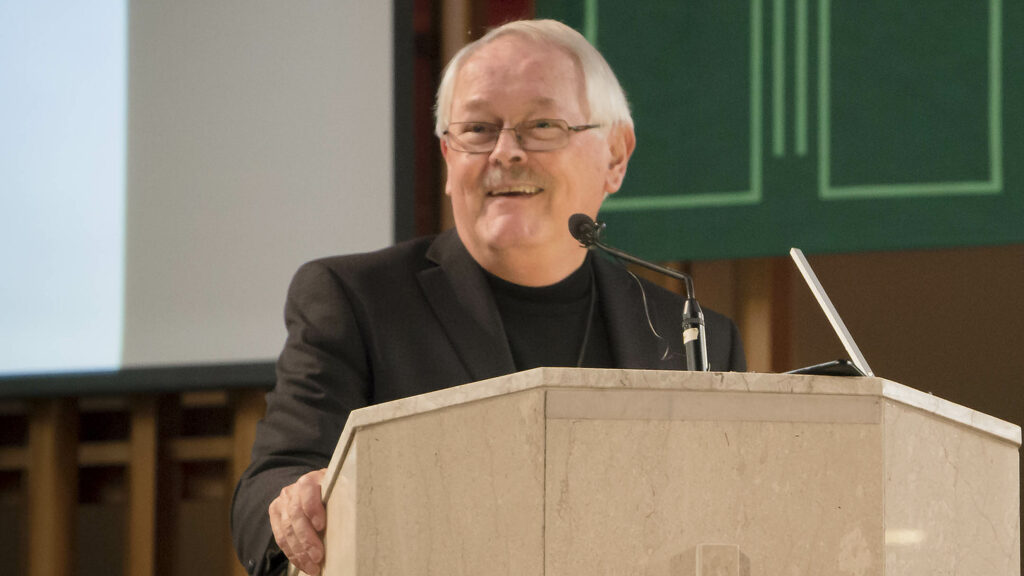Whatever energy we don’t transform, we will transmit. That’s a phrase I first heard from Richard Rohr and it names a central challenge for all mature adults. Here’s its Christian expression.
Central to our understanding of how we are saved by Jesus is a truth expressed by the phrase: Jesus is the Lamb of God who takes away the sins of the world. How are we saved through Jesus’ suffering? Obviously, that’s a metaphor. Jesus is not a sheep, so we need to tease out the reality beneath the metaphor. What prompted the first generation of Christians to use the image of a suffering sheep to explain what Jesus did for us, and how does Jesus’ suffering take away our sins? Was there a debt for sin which only God’s own suffering could cancel? Was the forgiveness of our sins some kind of private, divine transaction between God and Jesus?
These questions have no easy answer, but this much must be said: while some of this is mystery, none of it is magic. Admittedly, there’s mystery here, something that lies beyond what we can adequately explain by rational thought, but there’s no magic here. The deep truths that lie somewhat beyond our rational capacities do not negate our rationality; they only supersede it, analogous to the way that Einstein’s theory of relativity dwarfs grade school mathematics.
Thus, allowing for some mystery, what can we tease out of the metaphor that presents Christ as the Lamb of God who takes away the sins of the world? Moreover, what’s the challenge for us?
Here’s the historical background to this image. At the time of Jesus, within Judaism, there were a number of atonement (reconciliation) ritual practices around lambs. Some lambs were slaughtered in the temple as offering to God for our sins, and some others were employed as “scapegoat” lambs. The scapegoat lamb ritual worked this way. A community would gather with the intention of participating in a ritual to ease the tensions that existed among them because of their weaknesses and sin. They would symbolically invest their tensions, their sins, on to the lamb (which was to become their scapegoat) with two symbols: a crown of thorns pushed into the lamb’s head (making it feel their pain) and a purple drape over the lamb’s back (symbolizing its corporate responsibility to carry this for them all). They would then chase the lamb out of the temple and out of town, banishing it to die in the wilderness. The idea was that by investing the lamb with their pain and sin and banishing it forever from their community, their pain and sin were also taken away, banished to die with this lamb.
It is easy to see how they could easily transfer this image to Jesus after his death. Looking at the love that Jesus showed in his suffering and death, the first generation of Christians made this identification. Jesus is our scapegoat, our lamb. We laid our pain and sin on him and drove him out of our community to die. Our sin left with him.
Except, except, they did not understand this as some magical act where God forgave us because Jesus died. No. Their sins were not taken away because Jesus somehow appeased his Father. They were taken away because Jesus absorbed and transformed them, akin to the way a water purifier takes the dirt, toxins, and poisons out of the water by absorbing them.
A water purifier works this way. It takes in water contaminated with dirt, impurities, and poisons, but it holds those toxins inside itself and gives out only the purified water. So too with Jesus. He took in hatred, held it inside, transformed it, and gave back only love. He took in bitterness and gave back graciousness; curses and gave back blessing; jealousy and gave back affirmation; murder and gave back forgiveness. Indeed, he took in all the things that are the source of tension within a community (our sins), held them within and gave back only peace. Thus, he took away our sins, not through divine magic, but by absorbing them, by eating them, by being our scapegoat.
Moreover, what Jesus did, as Kierkegaard so wonderfully says, is not something we should admire; it’s something we need to imitate. N.T. Wright, in his recent book Broken Signposts, sums up the challenge this way: “Whether we understand it or not – whether we like it or not, which most of us don’t and won’t – what love has to do is not only to face misunderstanding, hostility, suspicion, plotting, and finally violence and murder, but somehow, through that whole horrid business, to draw the fire of ultimate evil onto itself and to exhaust its power. … Because it is love that takes the worst that evil can do and, absorbing it, defeats it.”
Whatever we don’t transform, we will transmit. There’s a profound truth here regarding how we need to help take tension out of our families, communities, churches, and societies.

